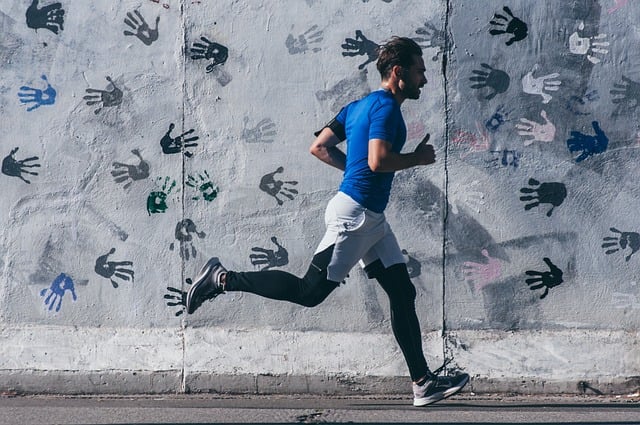Enhancing runner safety involves understanding and preparing for your environment. Before heading out, scan for potential hazards like heavy traffic, uneven terrain, or poor lighting. Essential running gear includes reflective clothing, sturdy shoes with traction, and good-quality socks. Additional safety tips include carrying ID and a first aid kit, choosing well-lit routes, staying alert, and regularly reviewing your routine. High-quality headphones, breathable clothing, and identification like an ID band are also key components of safe running gear.
Staying safe while running is paramount. Whether you’re a seasoned marathoner or just starting, understanding your environment, equipping yourself with essential running gear, and implementing personal safety measures can significantly enhance your experience. This article offers comprehensive runner safety tips, from scanning for potential dangers in your surroundings to choosing the right gear and adopting strategies for enhanced protection. Let’s dive into ensuring you run with confidence and peace of mind.
- Understanding Your Environment: Scanning for Potential Dangers
- Essential Running Gear: Protecting Yourself While You Run
- Personal Safety Measures: Being Prepared and Visible
- Running with Confidence: Tips for Enhanced Runner Protection
Understanding Your Environment: Scanning for Potential Dangers

When heading out for a run, taking time to assess and understand your environment is an essential runner safety tip that cannot be overstated. Before setting off, scan your surroundings for potential dangers like heavy traffic, uneven terrain, or poorly lit paths. Being aware of these factors allows you to plan your route accordingly, choose safe running gear suitable for the conditions, and take necessary precautions.
For instance, if you’re running near a busy road, consider opting for reflective clothing and a headlamp to increase visibility during low-light hours. On rough terrain, sturdy running shoes with adequate traction can prevent injuries from twists and falls. By understanding your environment, you can ensure that your run is not just enjoyable but also safe, following crucial runner protection advice tailored to your specific location and conditions.
Essential Running Gear: Protecting Yourself While You Run

Staying safe while running is paramount to enjoying the activity and preventing injuries. Essential running gear plays a significant role in protecting yourself during each stride. Consider investing in high-quality, reflective clothing, especially if you run at dawn or dusk. These garments enhance your visibility on the roads, ensuring drivers can see you and reducing the risk of accidents.
Additionally, wear comfortable yet supportive shoes designed for running. Proper footwear absorbs shock, aligns your feet and legs correctly, and prevents common running injuries like shin splints and plantar fasciitis. Don’t underestimate the power of a good pair of running socks too; they keep your feet dry and comfortable, reducing friction and blisters.
Personal Safety Measures: Being Prepared and Visible

Staying safe while running is a priority for any enthusiast. Personal safety measures are crucial components of every runner’s essential running gear. Reflectors and bright clothing are must-haves, especially if you run during low-light hours or in areas with poor visibility. Wearing high-visibility vest or reflective strips on your shoes and socks ensures you’re visible to drivers and other runners.
In addition to being seen, carrying a form of identification and a small first aid kit is valuable running protection advice. A simple ID bracelet or a phone case with your contact information can make a significant difference in an emergency. A compact first aid kit containing bandages, antiseptic wipes, and pain relievers provides immediate running gear protection in case of minor injuries.
Running with Confidence: Tips for Enhanced Runner Protection

Running with confidence is a key aspect of enhancing runner safety. Beyond wearing reflective clothing and proper lighting for early morning or evening runs, runners can boost their personal safety by adopting strategic routes that are well-lit and frequented by others. Staying alert and aware of surroundings, including traffic and potential hazards along the path, is crucial. Regularly reviewing and adjusting your running routine based on local conditions and personal comfort levels contributes to a safer overall experience.
Essential running gear plays a significant role in runner protection. This includes high-quality headphones or ear buds that allow you to stay aware of environmental cues while still enjoying your run’s audio accompaniment. Wearing a well-fitting, breathable running top and bottoms reduces the risk of chafing and discomfort, enabling you to focus on your pace and safety. Carrying identification, such as an ID band or a smartphone, ensures that help can be readily accessed if needed during a run.
